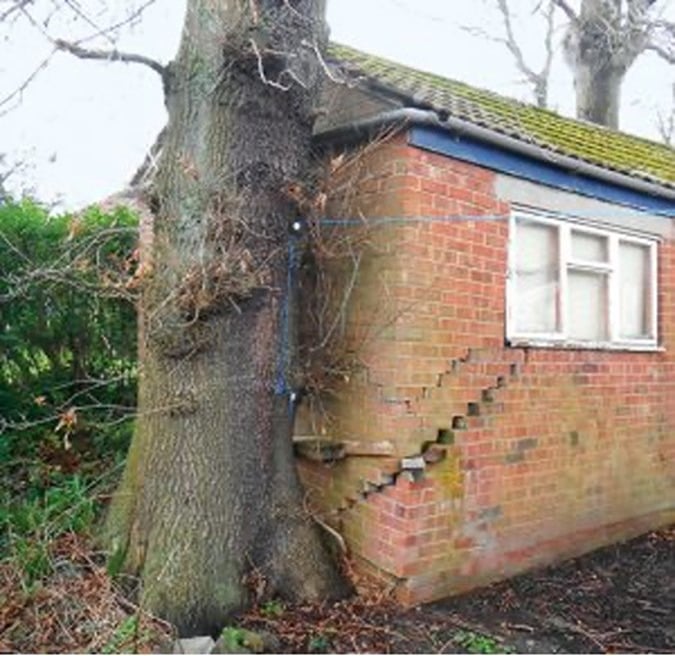Trees and Buildings

If one relies on the mainstream media one might be convinced that buildings and other structures are at serious risk of being damaged or even destroyed if there’s a tree anywhere in its vicinity. Pictures of trees that have fallen on buildings are always going to attract editors and capture headlines, but it’s the relative infrequency of such events that makes them newsworthy. The problem is that such stories serve to promote an exaggerated fear of dangers posed by trees, dangers which in most cases are minimal or non-existent. For every rare instance where a tree may contribute to property damage, there are thousands of examples where they coexist peacefully with structures.
Trees are vital to our living spaces, providing habitats for wildlife as well as offering a wide range of environmental and social benefits such as improved air quality, reduced energy costs, and enhanced mental well-being. Shifting the conversation towards these positive aspects can foster a more balanced view of trees and their role in our communities.
Nevertheless, while the risks posed to buildings by trees are generally low, one must still acknowledge that they can occasionally cause structural issues. But it is important that property managers and homeowners should have some understanding of the mechanisms behind such damage so that decisions can be made in a balanced and evidence-based way, diagnosing and resolving issues in a rational manner rather than reacting to unwarranted fears.
When trees do cause damage to properties it is either DIRECT, as a result of the physical effect of a part of a tree, be that branch, trunk or root, when it comes into direct contact with the structure, as opposed to INDIRECT damage, for instance damage caused by trees drawing moisture from shrinkable clay soils, causing it to shrink and result in subsidence. Various aspects of the potential for trees to damage houses can be found by following the links below.
DIRECT DAMAGE
As well as damage resulting from the failure of trees and branches, the simple growth of trees, including their roots, can also cause problems. . . READ ON:-
INDIRECT DAMAGE (SUBSIDENCE)
The vast majority of cracks that result from tree-related subsidence are minor and pose no threat to the structural integrity of the buiding. . . READ ON:-
